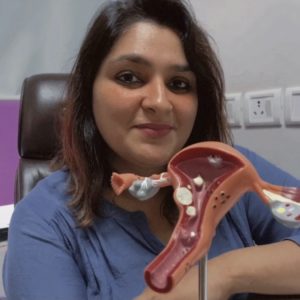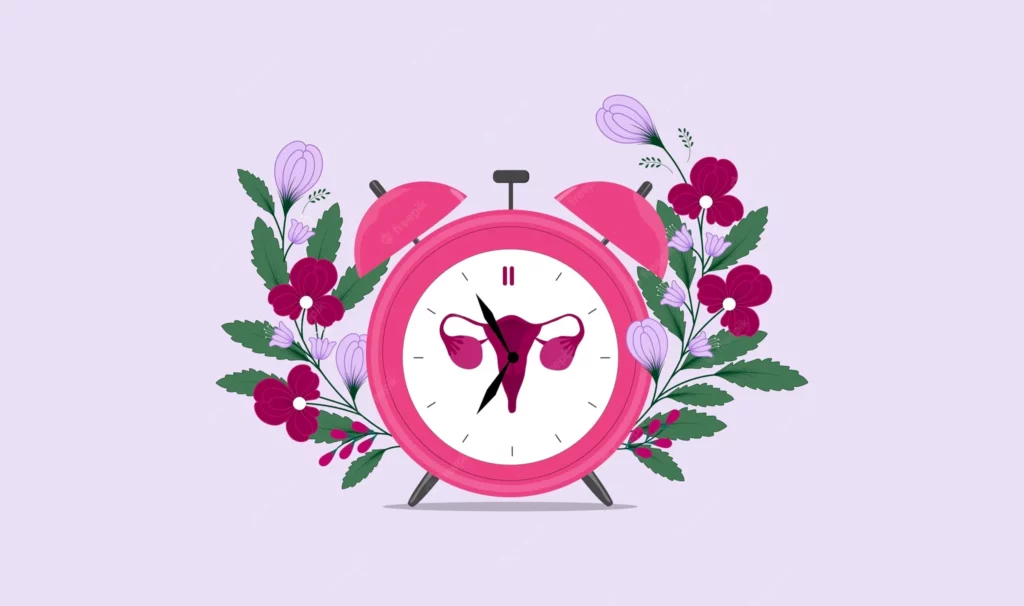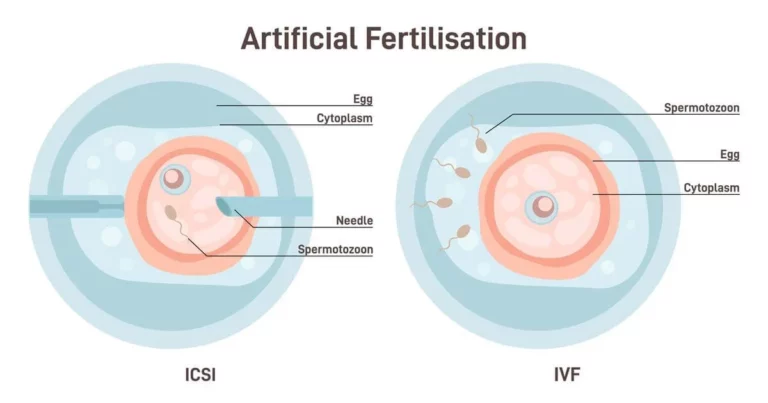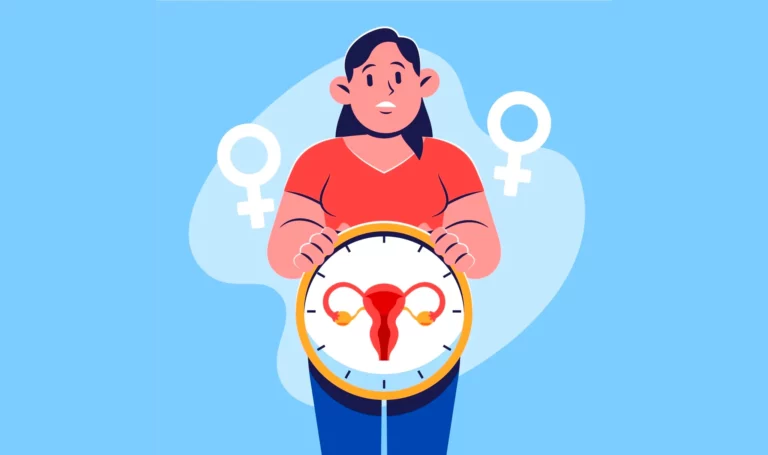Whether you are trying to conceive or looking to avoid pregnancy, knowing exactly when ovulation takes place is essential.
If you have been observing your menstrual cycles for sometime, it may already be convenient for you to detect when your ovulatory cycle will take place. However, you may not surely tell when it is over because the process itself does not have definite attributes. But, there are some signs that can be helpful at predicting if ovulation has occurred and when it is over.
In this article, we will be exploring the concept of ovulation, the best time to engage in intercourse during this period to get pregnant, along with 7 key signs that indicate ovulation is over.
Increase your pregnancy chances with Nory Ovulation Kit
What is Ovulation?
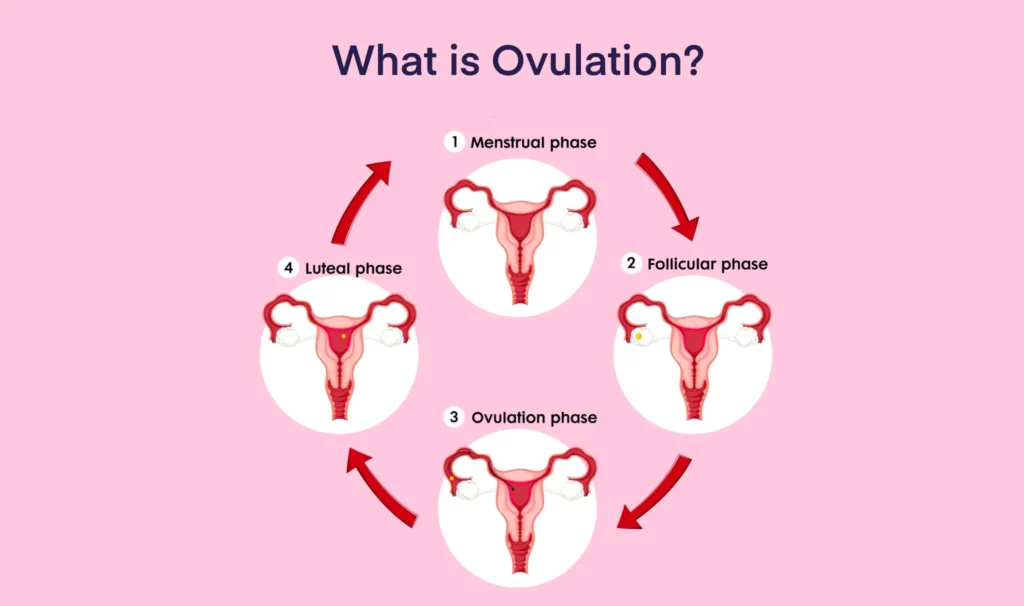
In simple terms, it is a pivotal phase in a woman’s menstrual cycle (period) when one of the ovaries releases a mature viable egg. The viable egg then moves down the fallopian tubes where it anticipates fertilization.
But, the process is way deeper than we just mentioned. In a menstrual cycle, there are three distinct phases.
Ovulation starts with the follicular phase that takes place right after periods begin and continues until the ovaries release an egg. Throughout this phase, the pituitary gland begins to produce FSH (follicle stimulating hormone) that encourages growth of ovarian follicles carrying immature eggs. Once the most dominant egg reaches close to maturation, the body also releases a high amount of estrogen hormone to prepare the uterine lining for future egg implantation.
After the follicular phase, the second phase is ovulating itself. The increased levels of estrogen now triggers luteinizing hormone (LH) surge. This surge now sets the matured egg to release within the next 24-36 hours. Once the egg releases, estrogen starts to decline quickly and return to its normal levels.
Now, the final luteal phase begins. During this phase, when the egg is released, the follicle transforms into a corpus luteum cyst. This cyst then starts releasing progesterone hormone to maintain the thickening of the uterine lining, preparing the body for pregnancy.
If the egg is fertilized by sperm, it will move from the fallopian tube to the womb where it will implant around the uterine lining. Or, if the egg is not fertilized, corpus luteum will immerse back in the body, making estrogen and progesterone levels drop and uterine lining to shed.
When Does Ovulation Occur in a Period?
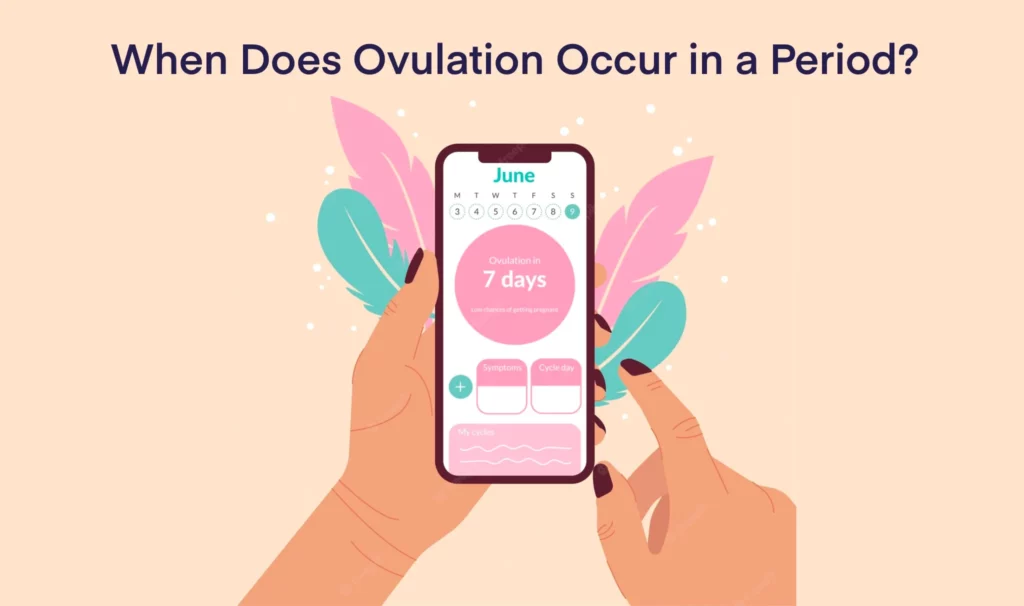
A normal period (menstrual cycle) is 28-days long. Throughout this period, ovulation typically takes place 12 to 14 days before the next menstruation. However, some women also experience irregular periods or periods longer than 28-days. It makes it complicated to track ovulatory cycles correctly.
Well, the Nory’s Ovulation Predictor Kit (OPK) can be beneficial for such women. It is an at-home kit designed to pinpoint ovulatory period by detecting the surge of luteinizing hormone (LH) in the urine.
Having period irregularities for the first few years of menstruating is considered normal. A normal menstrual cycle can vary from 21 to 35 days in women. But, in some cases, it is also possible that some women do not have ovulatory cycles at all. This condition is called anovulation and the woman will have to seek medical help to regulate their ovulation.
When is it best to Have Sex During Ovulation?
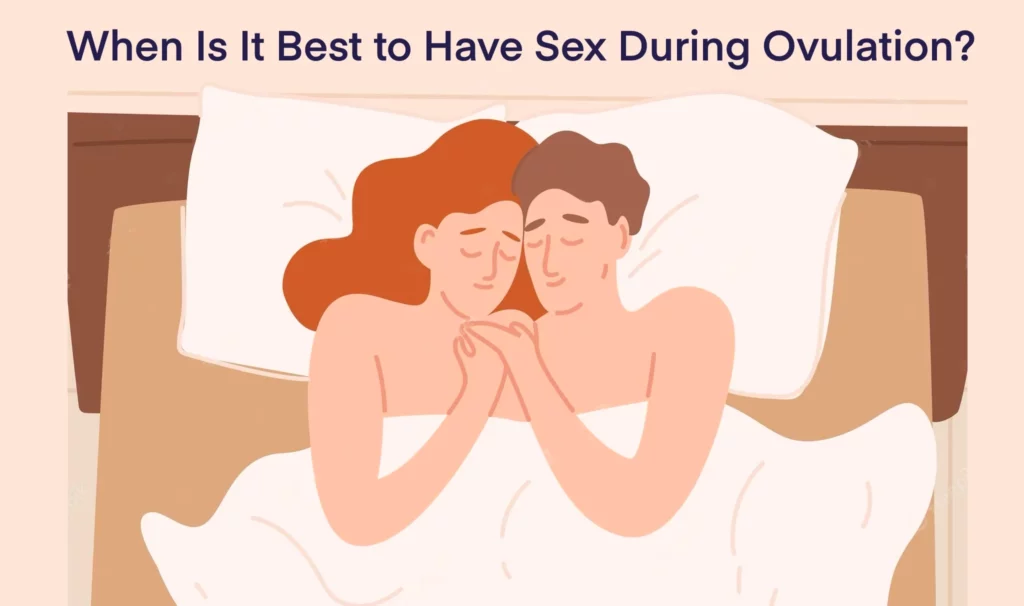
During ovulation, women have a 6-day fertile window when they are most likely to get pregnant from having unprotected intercourse. A woman is most fertile 4 days before ovulating, the day after ovulating, and up to 24 hours after ovulating.
The released egg is only viable for fertilization for 12 to 24 hours after ovulation takes place. And, sperm can live up to 5 days in the female reproductive system. So, if a couple is trying to conceive, having unprotected intercourse during this 6-day fertile window is best.
Signs Ovulation is Over
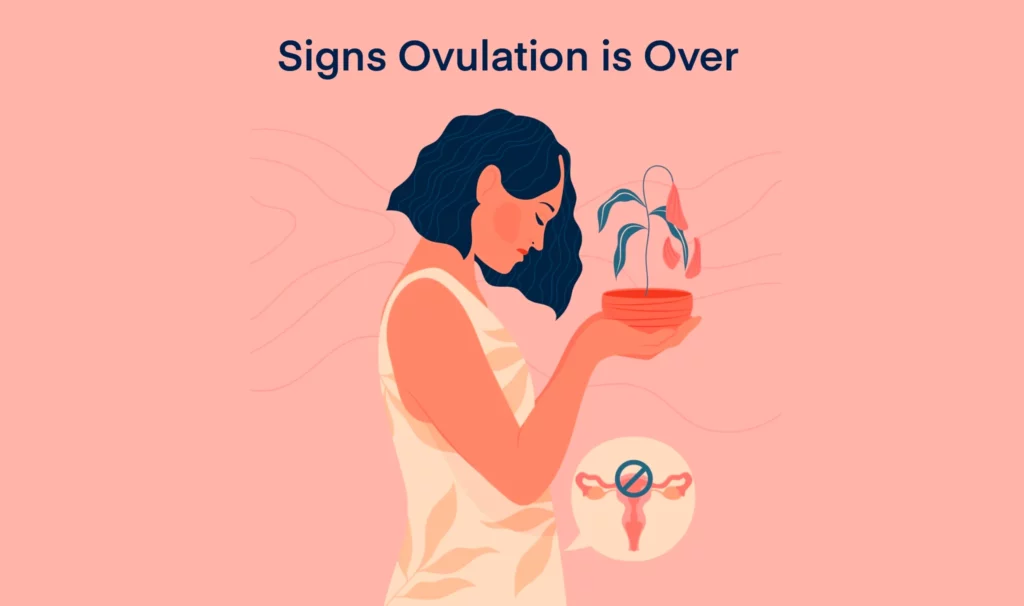
Despite not having definite attributes, there are some signs that can indicate if you are ovulating or it is over. Your body undergoes several changes during the ovulatory period due to surge in FSH, LH and estrogen levels. This surge can be easily and accurately tracked with an ovulation kit. But even if you do not have access to it, certain changes in the body during the ovulatory cycle are quite visible to indicate the period.
Consistency of Cervical Mucus Changes
Changes in the consistency of cervical mucus is one of the major changes the body goes through when a woman is about to ovulate or have ovulated. Before an ovulatory cycle, when your menstrual cycle has just started, the cervical mucus is thick, creamy and sticky. Sperm cannot survive in this type of mucus.
As a woman is close to ovulating, the cervical mucus changes and becomes thinner and slippery. This period is best for sperm to survive and easily slide down to the released egg.
Once the woman is close to stop ovulating, the cervical mucus changes again and becomes thick, creamy and sticky. Exactly as it was before the ovulatory period started.
Basal Body Temperature (BBT) Changes
Body temperature is another thing that significantly changes before, during or after the ovulatory cycle. Basal body temperature (BBT) is when a woman’s body temperature is at its absolute resting state. When a woman is about to ovulate, she will notice a slight dip in her basal body temperature.
About 24 hours before the ovulatory period begins, progesterone hormone surges causing BBT to incline by 1-2°F. This is when you can confirm if you are just about to ovulate. If the sperm successfully fertilizes the egg once the fertile window has started, the body temperature will continue to stay high during the fertile window.
Once ovulation is over, progesterone levels will return to normal, causing the body temperature to drop to its resting state. If the temperature continues to stay high beyond the fertile window, it may indicate a positive pregnancy.
Position of the Cervix Changes
Position of the cervix changes significantly during and after the ovulatory cycle is over. When a woman is about to ovulate, the cervix will position higher in the vagina, it will become softer, more open and moist to facilitate the entrance of sperm. The cervix will continue to be like this throughout the fertile window. These cervical changes occur due to the surge in estrogen levels that start to occur right before the fertile window.
Once ovulation ends, the cervix will change its position, lower in the vagina. It will become firm and its opening will start to narrow.
Sex Drive Changes
Due to surge in estrogen levels, sex drive or libido changes in women significantly throughout the menstrual cycle. When a woman is close to ovulating, she may feel more interested in intercourse during her 6-day fertile window. It is natural and any woman in her reproductive years will experience it during her ovulatory cycle. Once the cycle is over, sex drive will decline ultimately.
Hormones Level Changes
Ovulation is a result of a woman’s body undergoing a complex in interplay of certain reproductive hormones. Luteinizing hormone (LH), estrogen, and follicle-stimulating hormone (FSH) are primarily responsible for inducing an ovulatory cycle. Right before and during ovulating, these hormones have a surge and decline to their normal state as the ovulatory period is over.
FSH sets the ovarian follicles to grow and mature the egg, LH facilitates the release of the matured egg from ovary, and estrogen prepares the uterine lining for implantation after successful fertilization.
And, these hormones can be tracked through clinical and at-home tests. An ovulation detection kit is one such at-home test which can accurately measure the surge in LH levels through a urine sample, and pinpoint if the woman is ovulating or it is over.
Abdominal Discomfort Changes
Many women may experience Mittelschmerz when they are about to ovulate. Mittelschmerz (or middle pain) is lower abdominal pain associated with light cramping which only occurs around the ovulatory period. This abdominal comfort occurs due to the ovarian follicles rupturing. The discomfort is also often associated with nausea, bloating, popping or twinging in the lower abdomen.
As the ovulatory period is complete, this abdominal discomfort will subside ultimately.
Breast Tenderness Changes
Many women may experience their breasts being tender and their nipples being sore when they are about to ovulate. Surge in certain hormones, especially progesterone and estrogen causes this tenderness and soreness. Some women may also notice that breast pain and their breasts have grown.
These symptoms start to subside once the ovulatory period ends.
How to Know If Ovulation is Over?
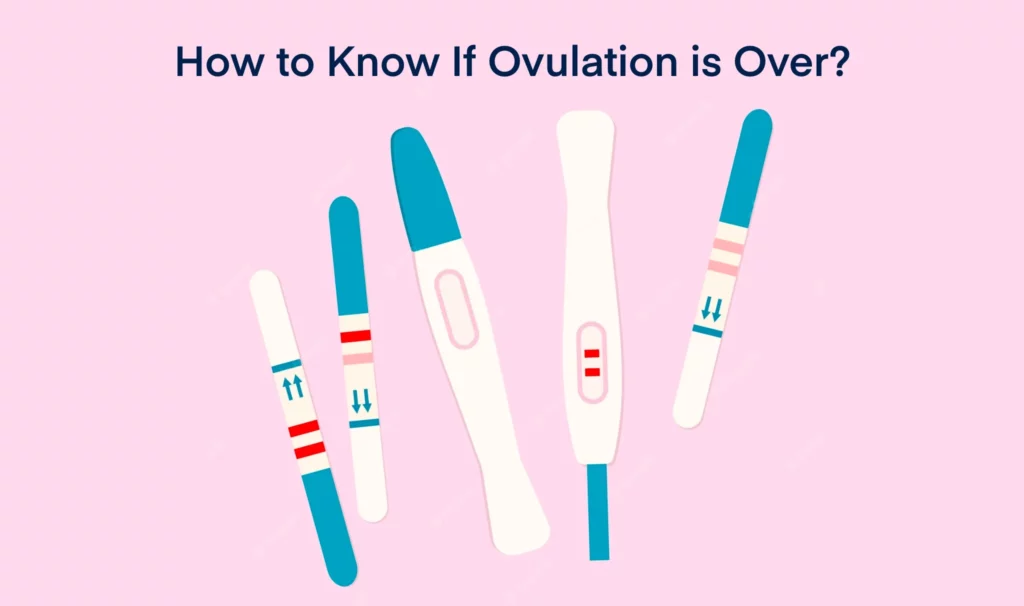
The above mentioned signs can definitely indicate if a woman has ovulated or not. However, these signs cannot certainly detect an ovulatory cycle. Also, in cases when women do not experience such body changes, have irregular periods or periods longer than a normal 28-day cycle, it can be difficult to pinpoint an ovulatory cycle.
In such cases, the most accurate way to confirm if a woman has ovulated is through an ovulation kit. As mentioned earlier, it detects the surge in urine LH levels to predict the fertile window and indicate if ovulatory cycle has already occurred or not.
Can You Get Pregnant After Ovulation is Over?
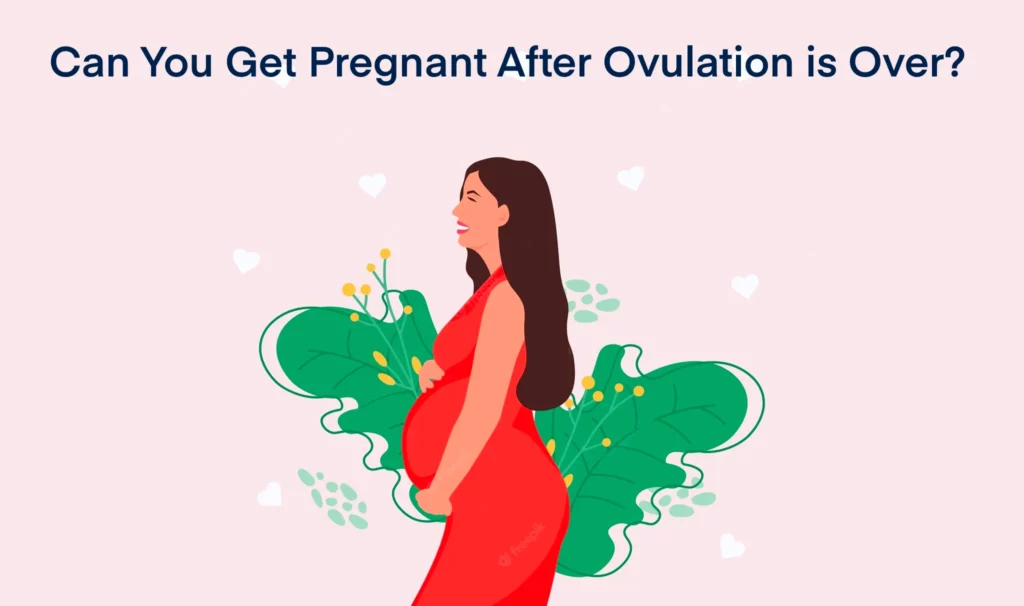
Even after the ovulation is over, the released mature egg is viable for fertilization for up to 12 to 24 hours. Also, the sperm can survive in the female reproductive system for up to 5 days. Therefore, if a woman had unprotected intercourse a few days before ovulation, on the same day, or even after a day, she still has chances of getting pregnant.
The Bottom Line

Understanding the signs of ovulation is doubtlessly essential for couples trying to conceive or avoid pregnancy. By understanding the conception of ovulation and monitoring changes in cervix mucus, basal body temperature, cervical position, sex drive, hormone levels, abdominal discomfort and breast tenderness, women can have a good insight into their ovulatory cycle, escalate their chances of conceiving.

